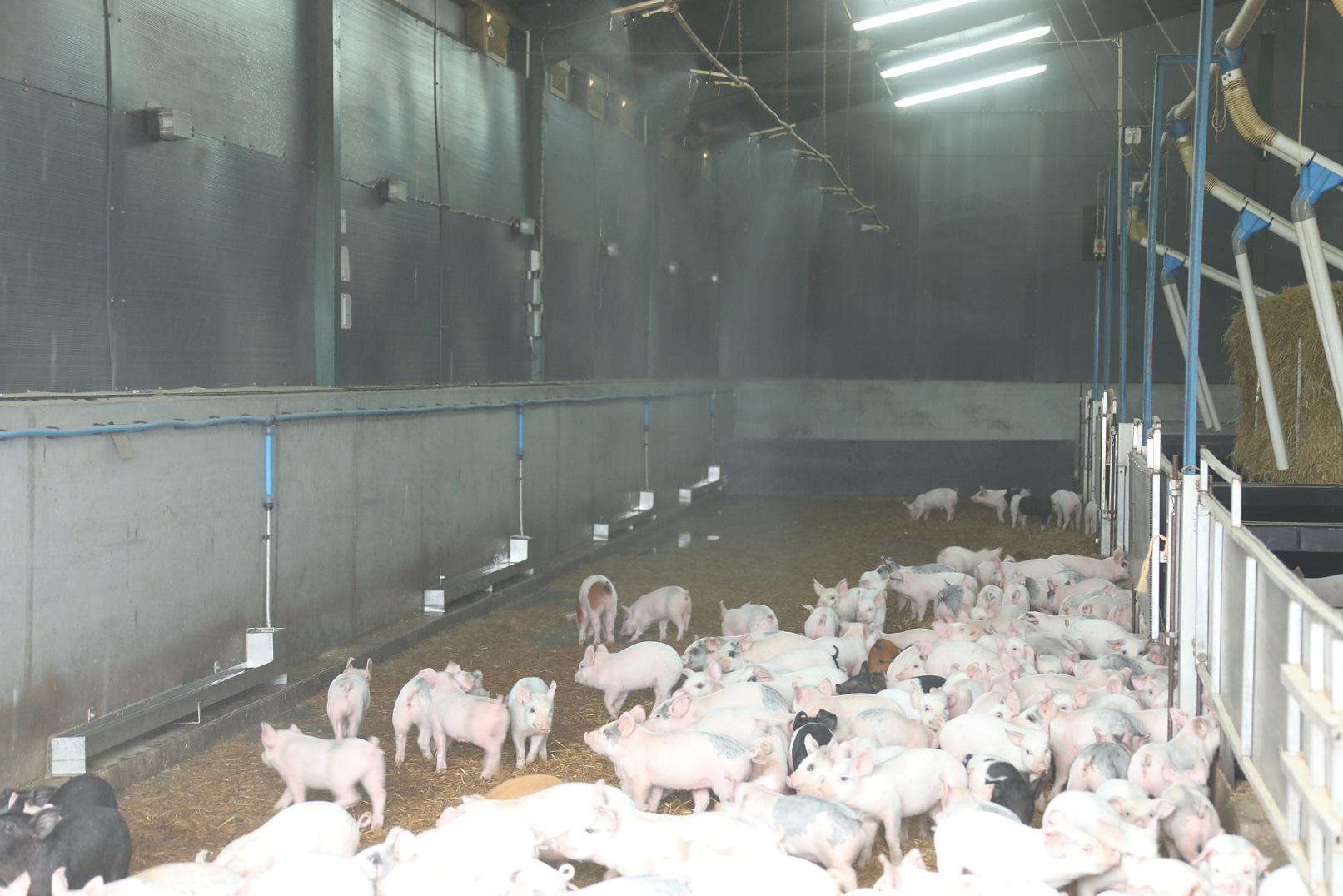- Home
- Knowledge library
- Avoiding heat stress in pigs: indoor herds
Avoiding heat stress in pigs: indoor herds
Stress from overheating can have a serious effect on your indoor herds, leading to reduced fertility, poor growth rates and even death. Find out what you can do to minimise the risk.
Buildings
- Check roof insulation as it deteriorates with time
- Good insulation will give both summer cooling and winter warming benefits to welfare and production
- Thermal imaging can be used to map heat energy loss from pig buildings (contact your regional KE manager if you are interested in carrying this out)
- If heated creeps are used, make sure they are enclosed and insulated to minimise heat loss into the farrowing house
- Ideally, control the creep temperature and adjust it relative to the age and health of the piglets
Ventilation
- Ensure there are enough fans for the size and number of pigs housed
- Consider using supplementary fans for large pens which are reliant on natural ventilation
- Clean and maintain fans and carry out regular checks between every batch, or at least quarterly, to ensure they are working properly
- You can check how air is moving using a smoke plume
Find out more about ventilating pig buildings
Alarms and emergency equipment
- Fit and test alarm systems that warn of rising building temperatures
- Make sure there is adequate provision for emergencies (e.g. power failure) to prevent unnecessary pain or distress
- Check that alarms and generators are in good working order and that all staff are aware of the emergency procedures and contingency plans
Find out more about control systems in pig buildings
Water
- Ensure pigs always have access to a supply of cool, clean water
- Make sure there are sufficient drinkers for the group and that they are all working properly – if in doubt, supply additional water in troughs
- Pigs cannot sweat but can keep cool if their skin is damp so provide areas of wet concrete or misters during hot periods
Check volume and flow rate requirements
Breeding herds: sows
- Where possible, serve at either end of the day when it will be cooler
- Maintain good hygiene, especially where sows have been wallowing, and ensure vulvas are clean pre-insemination
- Have handwashing facilities and/or gloves readily available
Breeding herds: boars
- Heat stress tends to reduce both the libido of boars and the viability of semen for up to eight weeks post heat stress
- Make a note of periods of hot weather on your calendar and remember to check semen quality for up to eight weeks after the last period of heat stress or ill health
- Temperature control of AI doses is crucial as they can overheat quickly and become unviable
- Ensure that doses are kept in an insulated container (16–18°C) until required for insemination and that they are shielded from direct sunlight
Find out more about semen storage and handling
Lactating herds
- Feed sows twice a day and increase to three times a day midway through lactation, with the larger meal in the evening
- Check trough hygiene at every feed as food can become stale and rancid during hot periods
- Check water quality, availability, and flow rate during peak demand – the flow rate should be 2–2.5 L/minute
- If necessary, use the feed trough for supplementary water
- Control supplementary heating in the farrowing house – this should only be necessary for the first 12 hours after farrowing depending on the piglets so if you have dimmers, use them, or replace them with lower wattage bulbs
- Cover and insulate creep areas to avoid overheating sows
- To help keep sows cool, it may be helpful to wet the sows' necks with cool water (however, ensure piglets do not get wet)
Check water volume and flow rate requirements
Dry sow herd
- Heat stress can result in a deficiency of the hormones needed to support pregnancy
- Where possible, make an area of wet concrete available for sows to lie on
- Observe the lying area at different times of the day
- Do not force sows to lie in the sun or on warm straw bedding
- Provide shade curtains if sunlight is streaming into the pen
Grower and finisher herds
Check water quality and ensure the flow rate is adequate:
| Liveweight (kg) | Ideal flow rate (L/min) |
| 30 | 1 |
| 70 | 1.5 |
- Check that feed is fresh, as it will become stale very quickly in warm weather
- Consider ordering less feed more frequently, particularly if bulk bins are exposed to direct sunlight
- Reduce the stocking density where possible so that pigs can lie away from each other
- Use foggers or misters if necessary to cool pigs
Useful links

Consider using misters to keep pigs cool during hot spells
Topics:
Sectors:
Tags:

